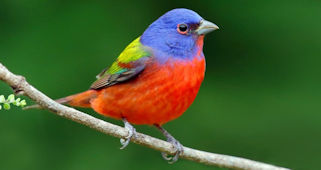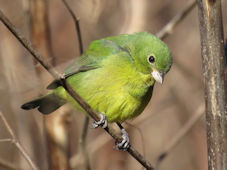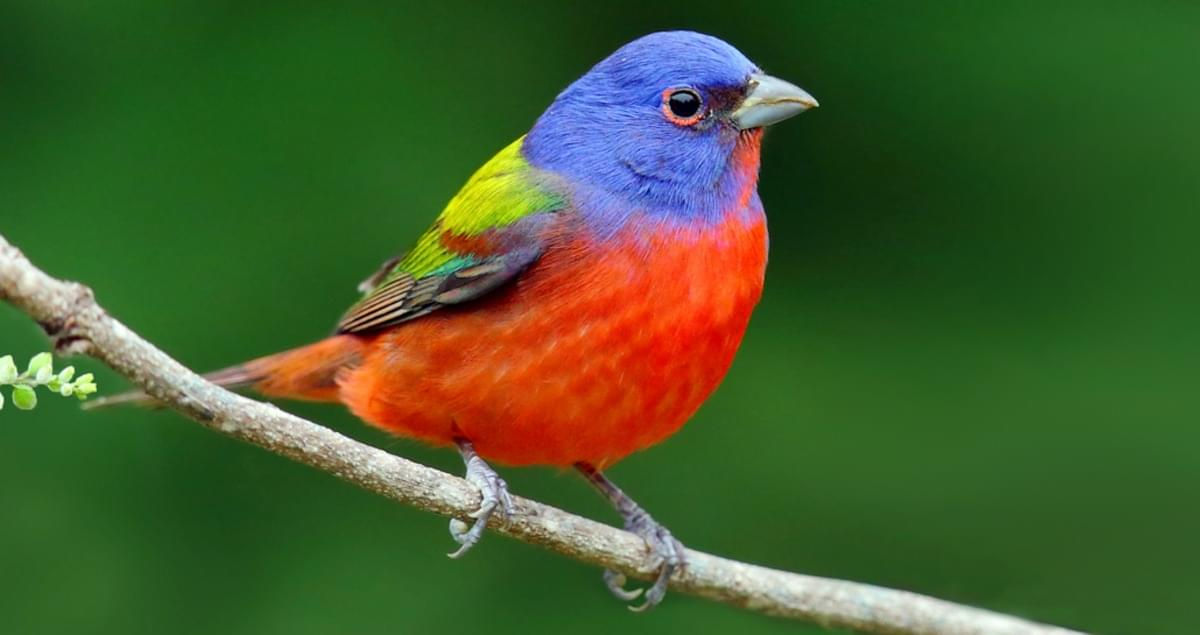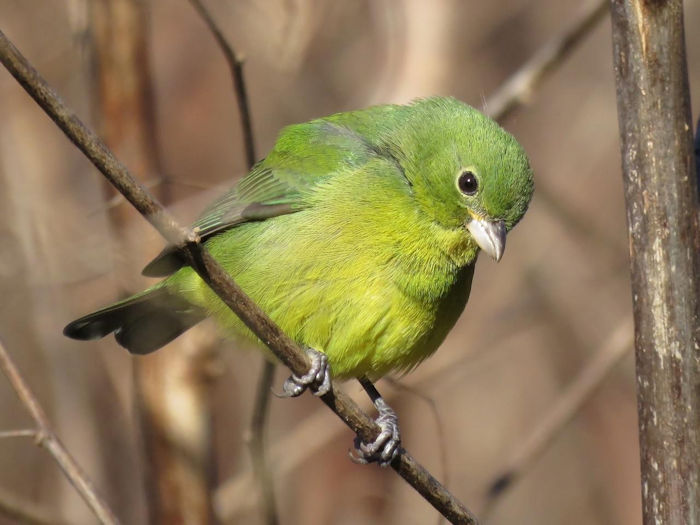Perching Birds
Description
Length: 4.7-5.1 in (12-13 cm). Weight: 0.5-0.7 oz (13-19 g)
With their vivid fusion of blue, green, yellow, and red, male Painted Buntings seem to have flown straight out of a child’s coloring book. Females and immatures are a distinctive bright yellow-green overall with a pale eyering. These fairly common finches breed in the coastal Southeast and in the south-central U.S., where they often come to feeders. They are often caught and sold illegally as cage birds, particularly in Mexico and the Caribbean, a practice that puts pressure on their breeding populations.
Behavior
Painted Buntings forage on the ground in dense cover, among grasses, or at seed feeders. Sometimes they venture out into grass to forage on seeds. On migration they form loose flocks with other seed-eating birds. Breeding males often perch out in the open to sing their jumbled, sweet songs.
Habitat
Painted Buntings breed in dense brush, often adjacent to thick, grassy areas or woodland edges. During migration and winter they favor dense, weedy habitats as well as the understory of semi-open forest.
Nesting
To defend territory, male sings from a raised perch, often partly hidden among foliage near treetop. Males will also engage in serious physical fights, probably in disputes over territorial boundaries. One male may have more than one mate. Nest: Placed in dense bushes, vines, or low in trees, usually 3-9' above the ground, sometimes higher. Nest (built by female) is open cup woven of grass, weeds, leaves, lined with fine grass, rootlets, and animal hair.
Feeding
Forages mostly on the ground. Also does some foraging up in shrubs and low trees. During migration, may forage in mixed flocks with Indigo Buntings. Diet is mostly seeds and insects. Reported to feed mainly on seeds, primarily those of grasses and weeds; sometimes eats berries and fruits. Also eats many insects, including beetles, caterpillars, grasshoppers, flies, and others. Probably eats more insects in early summer, and feeds them to its young.




